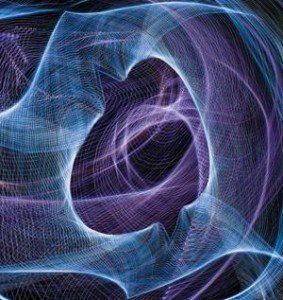Science of the Aura & Eidetic Space by Gerry Vassilatos
Eidetic Space – The Ground of Being by Gerry Vassilatos

To what does the term “eidetic” refer? What is “eidetic space”? Why does Quantitative Science view eidetic space as the absolute world infrastructure? What is “eidetic geocentricism”? Why are all ancient world models so diametrically opposed to those of modern quantitative science? Is the only difference between ancient and modern sciences one of instrumental perfections and measurements? These several questions must be first addressed before any real qualitative world comprehension can be organized and called “scientific”.
FIRST WORLD EXPERIENCE
First world experience occurs in earliest infancy. Infants are incapable of properly discerning through their yet awakening five senses. Pure ideational space is experienced directly by newborn babies in a mysterious manner requiring qualitative examinations. The harsh babble of the ordinary sensors is a frightening confusion to babies. As infants, we rely on a very special sensorium for our experience… a world generalizing guidance whose presence remains our private and personal tutor throughout life.
The mysterious external agency of which we speak is a suffusive sensorial space. This sensorial space fills the experience of infants and young children, and is the “lost world” for which adults search. Most of us lose touch with this quiet and comforting sensorium as we grow older.
We are progressively and slowly ensnared in a world of physical rigidities as world survival demands more physically focused attention. We find ourselves deceptively alone, while our “lost world” remains a dream… a breath away. The only moment an infant’s eyes focus upon an object is when we invade their sensorial space with something bright. The infant may focus upon such an object for a few seconds and then defocus into sensorial reverie. Into what space is an infant’s awareness then defocussed?
Awareness is a directed phenomenon, a rayic phenomenon. Awareness does not appear and disappear. Awareness is focused into and out of various mutually permeative co-existent sensorial spaces. In this regard there is no “internal-external” distinction. Experience is a flow of focalized awareness among diverse and co-existent spaces. Infant attentions do not “advance” into the external world and then “retreat” into an internal world. Infant attentions focus into and out of various spaces in which they have freedom of movement.
Attention modifications appear with progressive maturation. In late infancy the attention gradually begins to focus upon objects, but translates effortlessly into the imaginal reveries common to another coexistent space. This ideational transparency of objects makes childhood’s experience. The ability to translate through material objects of the physical world and travel effortlessly into ideational worlds evidences a forgotten human sense. This unstudied phenomenon reveals remarkable details which can only be examined qualitatively.
The attention space-foaming phenomenon demands new considerations of more ancient scientific comprehensions. The entire notion of ideational foci and directions requires the space permeating presence of viewlines, which objects radiate and percipients receive. The ideational passage of any percipient’s gaze evidences very defined directions — and viewlines — which are projected among percipient and perceived. These projective viewlines emanate from both percipient gaze and objects (Plato, Aristotle, Mesmer, Russ, Joire, Pavlita, Constable).
READ THE REST OF THIS INDEPTH ARTICLE HERE: http://aetherforce.com/eidetic-space-the-ground-of-being-by-gerry-vassilatos/